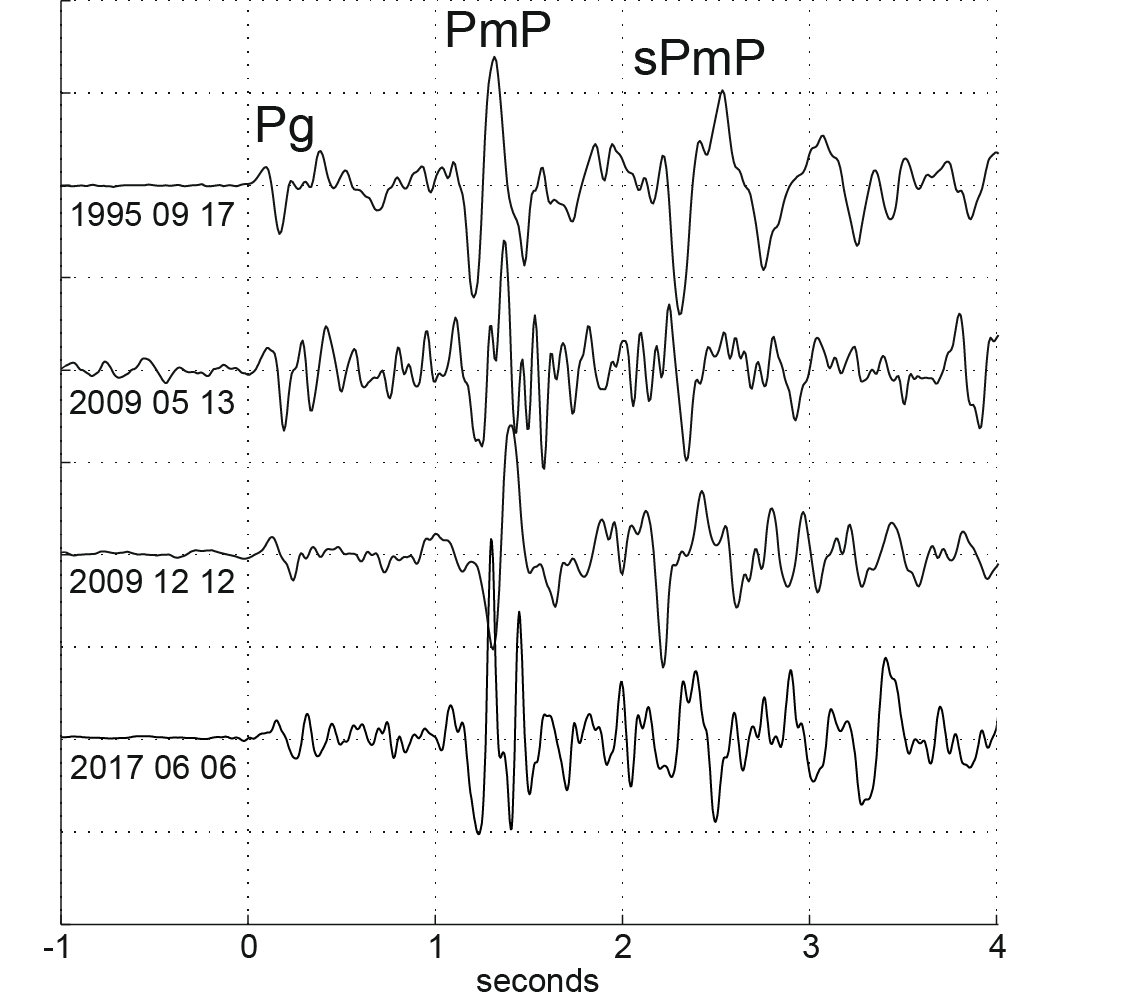The larger Fribourg area keeps shaking. Thus the region around Châteaux d’Oex has been shaken by a magnitude 4.3 quake on July first, followed by a swarm of dozens of aftershocks but also preceded by foreshocks (see: http://www.seismo.ethz.ch). The hypocenter has been located by SED at a depth of some 4.4 km right under the Vanil Carré. This quake is the largest in a cluster of numerous events registered since 2002 by SED. Recent work on the deep structure of the alpine foreland by Marius Gruber and our tectonics team has shown that the locality is situated on the SE termination of an east plunging basement culmination and could possibly be correlated with a basement fault (Charmey fault Zone – top basement is in this area around 4.3 km depth).

This contrasts with the quakes felt in the city of Fribourg (10th April 2017; M 2.2) and in the St Sylvester area (6th June 2017, M 3.3) which are located in the sedimentary cover. A waveform comparison (see figure) of the St Sylvester quake (SED- Schwarzsee event located at a depth of 5km) with previous earthquakes that occured on the Fribourg Lineament (FL) shows that this quake is most likely located in the sedimentary cover and not in the basement. Indeed, based on synthetic-seismogram modeling of waveforms and travel-time differences of the downgoing P-wave reflected at the Moho (PMP) and the upgoing S-wave reflected and converted to a P-wave at the Earth’s surface before being reflected at the Moho (sPMP), Kastrup et al. (2007) concluded that the hypocenters of the earthquake sequences of 1987, 1995 and 1999 along the FL were located within the sedimentary cover at a depth of only 2 km. A comparison of the seismograms of the two higher magnitude ECOS events recorded in 2009 along the FL with the corresponding seismogram of one of the 1995 events shows that the sPMP-PMP travel-time differences are almost identical and that therefore their focal depths must be similar (Deichmann et al. 2010; Vouillamoz et al. 2017). The same conclusion can be derived for the 2017 St-Sylvester M 3.3 event. This quake has also had precursory quakes as well as aftershocks. The quakes can be associated with the St Sylvester Fault Zone which is the southern branch of the seismically active Fribourg Zone.
Jon Mosar & Naomi Vouillamoz 7.7.17